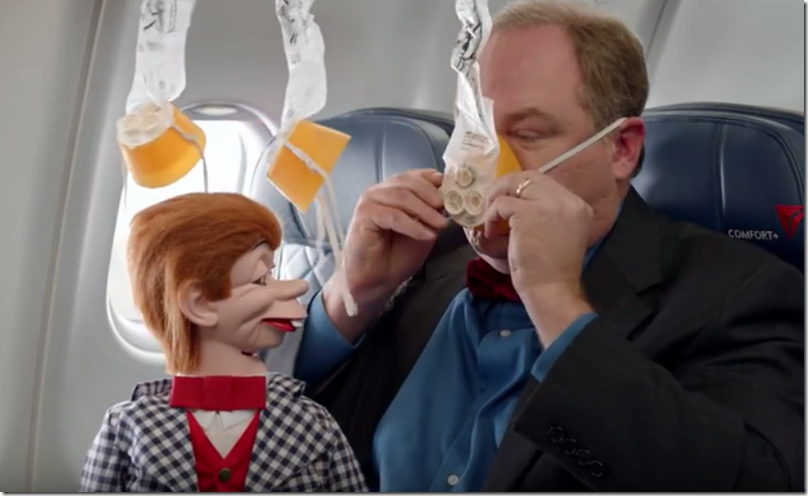How Delta Airlines Got Passengers To Watch The Safety Video
Imagine you’re an airline communications executive facing a vexing problem: Our passengers aren’t watching our pre-flight safety demonstration. How can we get them to pay attention?
It’s a critical question that can mean the difference between life and death—but you know that many (maybe most) of your passengers are far too busy staring at their phones, reading books, or talking to their travel companions to look up.
The challenge is that we jaded frequent fliers have seen bland safety demonstrations far too many times to count. Repeated exposures to them, useful as they might be, fail to grab our attention.
Some airlines, recognizing that problem, have gotten creative with their safety demonstrations. On one recent Delta flight, they played the following video.
As Delta wrote in the YouTube version of that video:
“Safety information is information that no one should miss, even if they’ve heard it a dozen times. So to help encourage even the most frequent of frequent fliers to pay attention we’re constantly adding fresh scenes and moments of fun.”
They conformed to a basic public speaking best practice by “Breaking the Pattern”—and, in so doing, bypassed my boredom screen. I’m not sure what I was expecting in that video, but it definitely wasn’t a life-sized squirrel, pirates, Moses, and a Larry Hagman lookalike.
The parallels for pubic speakers are obvious. Look for opportunities to break the pattern by delivering something authentic and meaningful that surprises your audiences, if only a little.
Here’s one example: instead of beginning a presentation by introducing yourself with the overused (and predictable) 60-second “who I am” starter, begin with an anecdote. Here’s another: if you’ve been using PowerPoint slides for a few minutes, black out the screen somewhat abruptly to signal that you’ve entered a different part of your talk. (You can find 101 such examples in my book 101 Ways to Open a Speech; the 101 ideas can be used throughout your talks, not just the beginning.)

Assuming the safety video increased audience attention—and I’m guessing it did—it accomplished an important goal.
But there’s one other—and more important—question: Were they paying attention to the video simply because it was unexpected, or did it also increase the passengers’ understanding of how to behave in an emergency?
I hope Delta tested that question through focus groups, recall tests, or some other reliable method. And since I know some Delta PR folks have read this blog in the past, if you’re out there and have such data, please send it my way! I’d love to cite at least a portion of your findings.
My new book, 101 Ways to Open a Speech, is now available at Amazon. You can read a free preview below.



Hi Brad,
That’s a great point. These fun/unexpected videos do increase attention (my first experience with this was on Virgin America, which has a fantastic video–here’s my take on it http://deborahbrody.com/2014/12/do-you-fly-a-brand/ ) but do people change their behavior? My feeling is that most people have flown many times before and they just know it. They don’t really need to be told what to do. These videos just make it more bearable to hear the same thing over again.
Safe flying!
Deborah
thanks for sharing this funny video. Qantas has just got a new one out as well, which equally makes you pay attention (and wish you could go to all the destinations featured…): https://www.youtube.com/watch?v=fhbXFHrDmTg
A quarter of a million views for a safety video is pretty, pretty, pretty good. Goes to show that even the driest subject can be made interesting. As marketers, our job is to unbore.